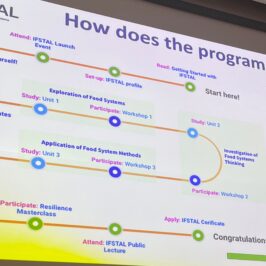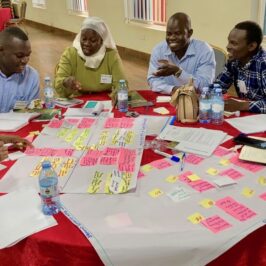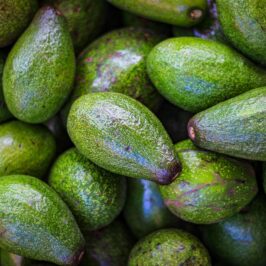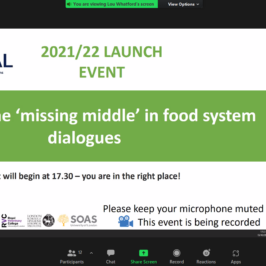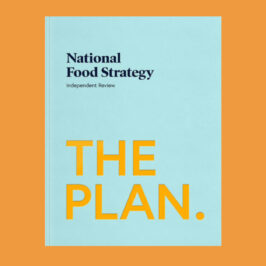Rebecca Wells, IFSTAL EC, City, University of London reflects on the connection between gorillas and guerillas. How could they possibly relate to communication about food systems?
The IFSTAL Summer School is always a space for inspiration, collaboration and innovation. This year is no different as I was to find out when I arrived at the University of Reading for Communications Day. I was looking forward to sharing my work on communication and its relationship to food systems, and excited to work with this year’s Summer School cohort.
Energised after a full first day of food systems, a fantastic evening exploring the Museum of Rural Life and fresh-faced from an early morning photo shoot, participants began the day thinking about whether and how you could take a food systems approach to food communication. We started with advertising and marketing – where some of the most sophisticated and subtle messaging takes place.
An advert that doesn’t have any dialogue, is very long at 90 seconds and doesn’t even show the product it’s advertising doesn’t seem like a recipe for successful communication. So watching this ‘game changing’ chocolate advert, (in case you haven’t already guessed, this is where the gorilla comes in) we started to think about why this approach was so successful, raising Cadbury’s sales by 10%.
I argue that adverts and marketing campaigns that take a systems approach to food can be more successful than those that are more narrowly focussed. Adverts such as Mum’s Birthday and Triplets (also for Cadbury’s milk chocolate, made for a UK and Egyptian audience respectively) recognise and reflect food’s cultural, social, environmental, economic and/or political dimension, as well as its simple dietary one. They portray a recognisable and ‘relatable’ local context or environment, include nods towards pricing and nutrition and deliver an emotional and heart-warming message through a compelling narrative that understands the power of food as a social bond.
What’s more, the marketing experts and advertising executives that come up with these campaigns recognise that the process of communicating food messages, whether they are related to health, environment or are simply trying to sell a product is more than a simple linear process of ‘who says what to whom’. These adverts understand that communication is not linear, that multiple messages can be given at the same time, that what audiences understand from a message cannot be assumed, and that our cultural economic and political background has a big part to play in how we understand food messaging.
These examples of slick and sophisticated adverts are many months in the making and are costly to produce. But in these days of social media and the proliferation and easy availability of advanced portable technology, those of us with a phone can all easily be reporters. Citizen journalism or guerrilla reporting is a trend challenging the mass media, getting ahead of the curve and is now influencing the way big media organisations report. After all we know from media theory that The Medium is the Message.
Thinking about ways we can communicate our own research and work, we enjoyed a session this afternoon with Caroline Knowles and Caroline Cross, from the University of Reading’s communication team. After talking about some of the many ways they promote Reading academics’ research, they set the students a task to work in their project groups and make their own two minute video explaining their Summer School project to a very tight deadline. The results showed how much we had learned about communication today – the films were concise and creative, innovative and engaging and we hope inspired everyone to use this opportunity to work together to come up with a great project presentation at the end of the week.
Thanks to all the IFSTAL Summer School participants and the team for a great day!
Catch up on all the summer school 2019 news here


